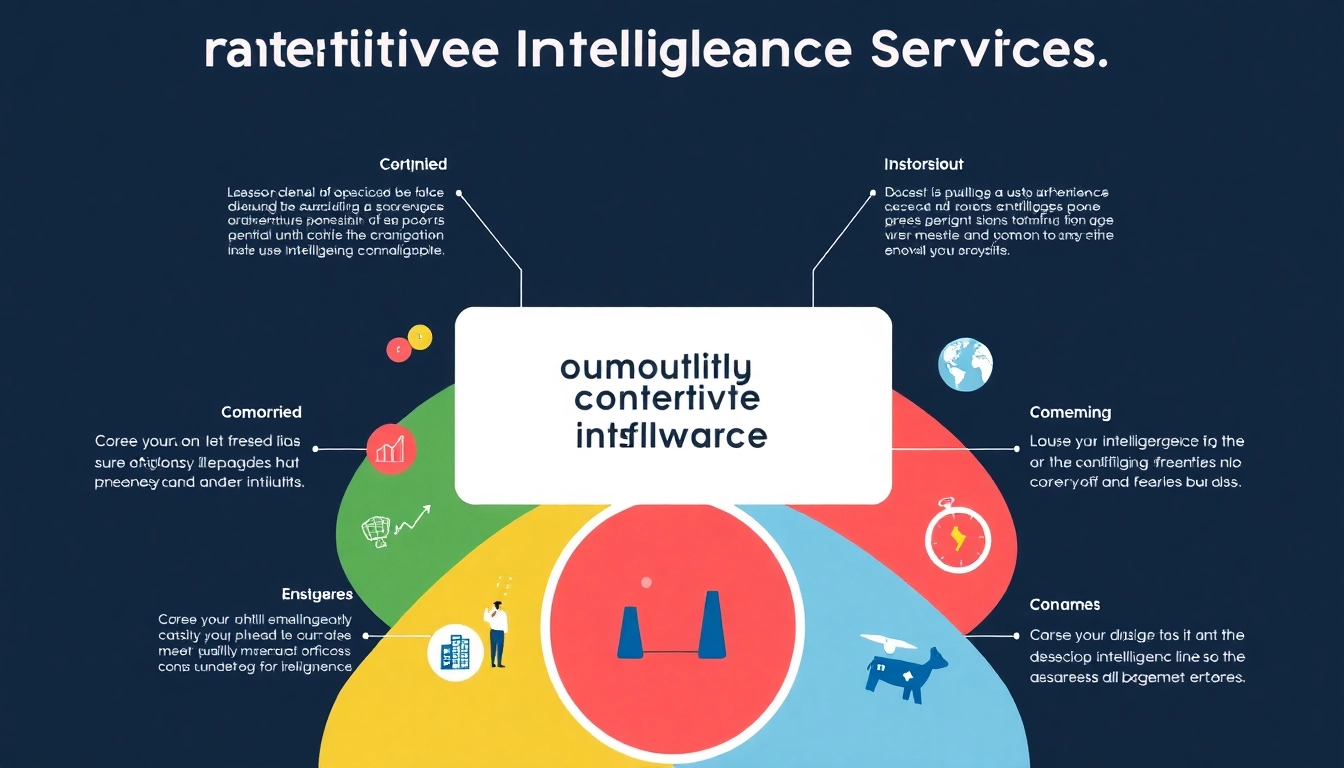Understanding Competitor Pricing Analysis
What is Competitor Pricing Analysis?
Competitor pricing analysis is a strategic approach used by businesses to evaluate how their pricing compares to that of their competitors. This process involves gathering data on competitors’ prices, understanding their pricing strategies, and analyzing market trends to inform pricing decisions and optimize profit margins. Essentially, it helps businesses to position themselves effectively in the marketplace by detailing where they stand concerning their competitors. More than just a reactive measure, the competitor pricing analysis serves as a proactive tool for setting prices that resonate with consumer expectations and market realities.
Importance of Competitor Pricing Analysis
The importance of competitor pricing analysis cannot be overstated in today’s highly competitive business landscape. It allows companies to make informed pricing decisions that foster competitiveness while ensuring profitability. Understanding competitors’ price points helps organizations identify areas of opportunity or potential threats. Additionally, it aids in crafting pricing strategies that reflect value, optimize sales volume, and improve customer satisfaction. With accurate pricing analysis, businesses can anticipate market changes and adjust their pricing in response to consumer behavior and competitor actions.
Key Concepts and Terminology
- Market Positioning: The place a brand occupies in the minds of consumers relative to competitors.
- Price Elasticity: The responsiveness of consumers to price changes, indicating how demand might fluctuate with price adjustments.
- Value Proposition: The promise of value to be delivered to consumers, shaping what they are willing to pay.
- Competitive Set: A defined group of direct competitors used for analysis and comparison.
- Benchmarking: Comparing business processes and performance metrics to industry bests and best practices from other companies.
Steps to Conduct a Competitor Pricing Analysis
Identifying Your Competitors
The first step in conducting a successful competitor pricing analysis is to accurately identify your competitors. This can range from direct competitors—those offering similar products or services to the same target market—to indirect competitors who may offer alternative solutions. Begin by mapping your market landscape. Tools such as SWOT analysis (Strengths, Weaknesses, Opportunities, Threats) can delineate your competitive set and highlight critical industry players.
Data Collection Techniques
Once you’ve identified your competitors, the next step is collecting pricing data. This process often involves:
- Online Research: Explore competitor websites, product listings, and e-commerce platforms to gather publicly available pricing information.
- Surveys and Consumer Feedback: Engaging current customers can provide insights into perceived price fairness and competitor pricing.
- Market Reports: Industry reports from market research firms can provide extensive data on pricing strategies and trends within your sector.
- Competitor Monitoring Tools: Use digital tools that track competitor prices and offer alerts on pricing changes, helping to automate analysis.
Analyzing Pricing Data
After collecting data, the analysis phase begins. This involves organizing the data collected to identify patterns, trends, and anomalies:
- Price Comparisons: Create a comparison chart to visualize where your pricing stands against competitors’ offerings across various factors such as features, quality, and added services.
- Identify Strategies: Analyze the reasons behind competitors’ pricing decisions. Are they adopting a low-cost leadership strategy, or are they competing based on premium features?
- Customer Segmentation: Consider how different price points appeal to various customer segments and how that aligns with your target demographics.
Tools and Resources for Pricing Analysis
Software Solutions for Data Collection
There are numerous software solutions available to assist in competitor pricing analysis:
- Price2Spy: A competitive price tracking tool that allows users to monitor and analyze competitors’ pricing strategies effectively.
- Skuuudle: An e-commerce price intelligence platform that aggregates competitor pricing data and alerts users to changes.
- Competera: An AI-driven pricing solution that helps businesses optimize their pricing strategies based on competitor data and consumer insights.
Leveraging Market Research Platforms
Utilizing market research platforms can provide broader insights beyond just pricing. Platforms like Statista and MarketResearch.com can furnish essential data about market trends, consumer behavior, and industry benchmarks, which all play significant roles in pricing strategy formulation.
Utilizing Online Price Comparison Tools
Online price comparison tools help track prices across different online retailers in real-time:
- Google Shopping: A service that allows users to compare prices across multiple retailers for the same product.
- PriceGrabber: A comparison shopping site that provides price comparisons, reviews, and detailed product information.
Common Challenges in Pricing Analysis
Data Quality and Reliability Issues
One major challenge in pricing analysis is ensuring the quality and accuracy of the data collected. Inaccurate data can lead to misguided pricing decisions. To mitigate this risk:
- Cross-verify data from multiple sources.
- Regularly update your data to reflect current market conditions.
- Use reputable tools and database services known for their reliability.
Understanding Market Dynamics
The market is constantly changing, influenced by competitive actions, consumer preferences, and economic conditions. A static pricing model can quickly become obsolete. To tackle this challenge:
- Monitor market trends frequently and remain active in industry discussions.
- Engage with customers to understand their evolving needs and expectations.
Competitor Response Strategies
Competitors may respond to your pricing analysis with their strategies. Hence, it’s critical to stay agile and ready to adapt your approach. Regularly revisit your pricing strategies based on your findings and competitor responses to maintain a competitive edge.
Best Practices for Effective Pricing Strategies
Regularly Updating Pricing Models
Maintaining an up-to-date pricing model is essential for capturing market fluctuations and opportunities. Implement a routine schedule for reviewing your pricing strategies to ensure relevance and competitiveness.
Integrating Customer Feedback
Customer feedback is invaluable when it comes to understanding pricing perception. Utilize surveys, direct feedback, and social media listening to capture customer opinions about your prices and those of your competitors.
Measuring Performance Metrics
Establishing key performance indicators (KPIs) to track the success of your pricing strategies is essential. Metrics such as sales volume, profit margins, and customer acquisition costs can provide insights into whether your pricing strategies are effective.



